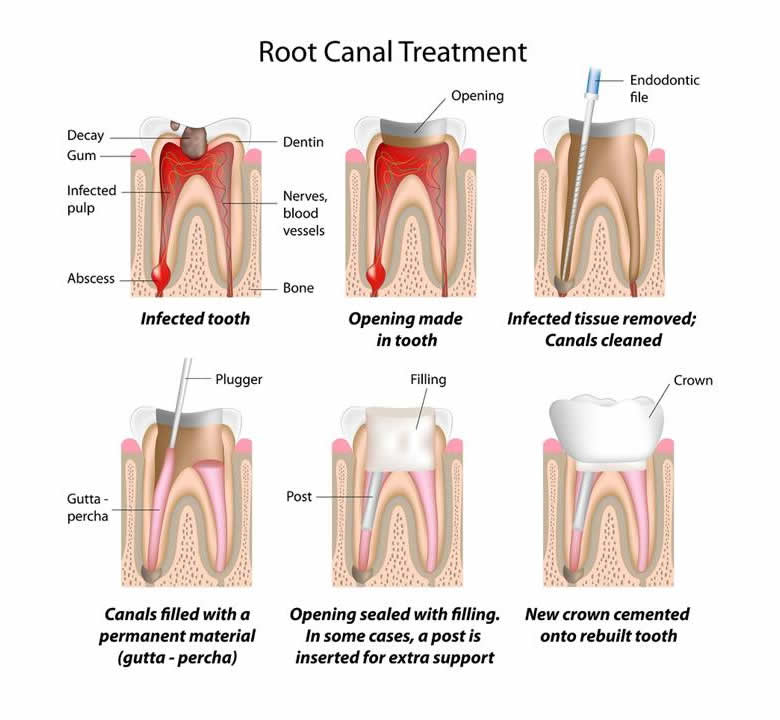What Is Endodontic Treatment?
“Endo” is the Greek word for “inside” and “odont” is Greek for “tooth.” Endodontic Treatment treats the inside of the tooth. Root canal treatment is one type of Endodontic Treatment. Inside the tooth, under the white enamel and a hard layer called the dentin, is a soft tissue called the pulp. The pulp contains blood vessels, nerves, and connective tissue and creates the surrounding hard tissues of the tooth during development. The pulp extends from the crown of the tooth to the tip of the roots where it connects to the tissues surrounding the root. The pulp is important during a tooth’s growth and development. However, once a tooth is fully mature it can survive without the pulp, because the tooth continues to be nourished by the tissues surrounding it.
Endodontic Treatment is necessary when the pulp, the soft tissue inside the root canal, becomes inflamed or infected. The inflammation or infection can have a variety of causes: deep decay, repeated dental procedures on the tooth, or a crack or chip in the tooth. In addition, an injury to a tooth may cause pulp damage even if the tooth has no visible chips or cracks. If pulp inflammation or infection is left untreated, it can cause pain or lead to an abscess.
What Signs And Symptoms Show That You Require Endodontic Treatment?
Signs to look for include pain, prolonged sensitivity to heat or cold, tenderness to touch and chewing, discoloration of the tooth, and swelling, drainage and tenderness in the lymph nodes as well as nearby bone and gum tissues. Sometimes, however, there may be no symptoms.
How Does Endodontic Treatment Save The Tooth?
The Endodontist removes the inflamed or infected pulp, carefully cleans and shapes the inside of the root canal, then fills and seals the space. Afterwards, a crown will be placed or other restoration on the tooth to protect and restore it to full function. After restoration, the tooth continues to function like any other tooth.
Will The Patient Feel Pain During Or After The Procedure?
Many Endodontic procedures are performed to relieve the pain of toothaches caused by pulp inflammation or infection. With modern techniques and anesthetics, most patients are comfortable during the procedure.
For the first few days after treatment, your tooth may feel sensitive, especially if there was pain or infection before the procedure. This discomfort can be relieved with over-the-counter or prescription medications. Follow your Endodontist’s instructions carefully.
Your tooth may continue to feel slightly different from your other teeth for some time after your Endodontic Treatment is completed. However, if you have severe pain or pressure or pain that lasts more than a few days, call your Endodontist.

